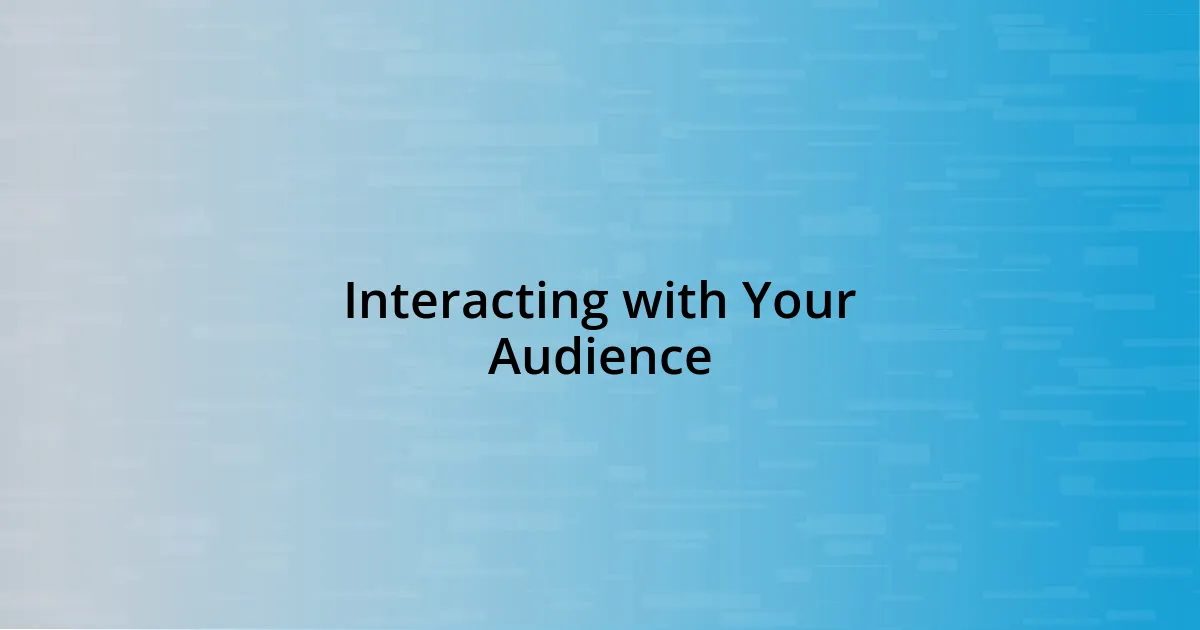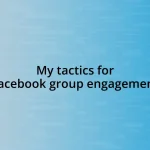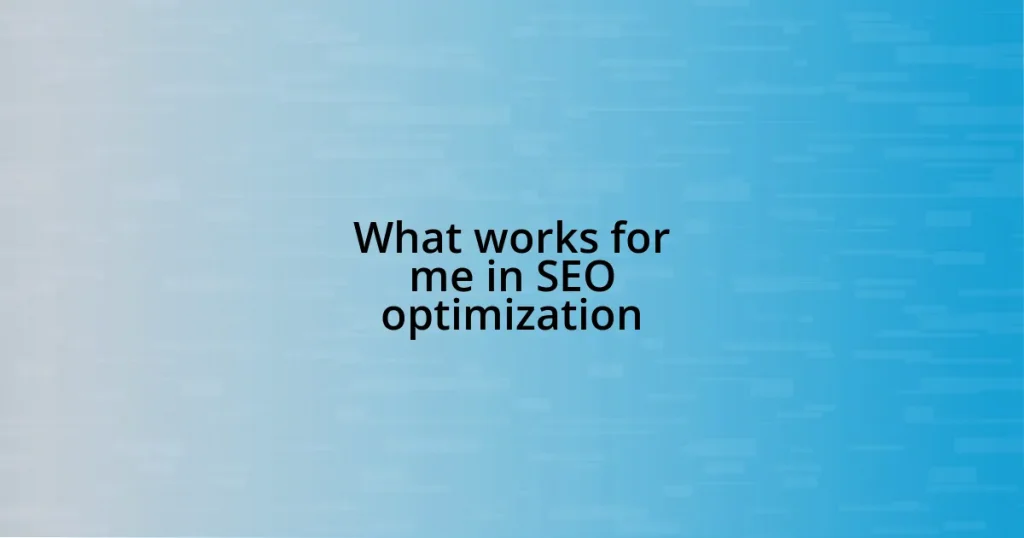Key takeaways:
- Live streaming creates direct connections between creators and audiences, enhancing engagement through real-time interaction.
- Choosing the right platform involves assessing features, target audience, and ease of use for a smoother streaming experience.
- Setting up quality streaming equipment, including camera, microphone, and lighting, significantly impacts stream quality and viewer connection.
- Promoting streams via social media, email newsletters, and collaborations can broaden reach and enhance community engagement.

Understanding Live Streaming Services
Live streaming services have transformed the way we consume content, creating a direct connection between creators and their audiences. I remember the first time I tuned into a friend’s live cooking session; it felt like being in her kitchen, sharing laughs and learning recipes together in real-time. Is there anything more engaging than the spontaneity of live interaction?
These platforms offer an array of features, from chat functions to screen sharing, enhancing viewer engagement. I often find myself captivated by the genuine reactions of streamers as they address viewer comments or unexpected technical hiccups. It’s a reminder that we’re not just passive consumers; we’re part of an unfolding experience, making me wonder how much more authentic can a connection get?
Understanding the variety of types available—like gaming, tutorials, or live events—allows me to clarify what I enjoy most. For instance, I personally lean toward educational streams; they fill that craving I have for knowledge while feeling like I’m part of a community of fellow learners. Doesn’t that sense of belonging elevate the whole experience?

Choosing the Right Platform
Choosing the right platform can sometimes feel overwhelming, especially with so many options available. For me, the key is to identify what features resonate most with my streaming style. Are you looking for robust chat features or seamless integration with social media? I remember once trying to set up a stream and found myself torn between a platform that prioritized video quality and another that offered fantastic audience engagement tools. Ultimately, the choice depends on what you value most in your streaming experience.
The audience you want to reach is another crucial factor. From my experience, understanding whether you’re targeting a casual viewer or a more professional, niche audience can hugely influence your decision. I once chose a platform primarily because my target audience was on it, which led to better interactions and overall satisfaction with my streams.
Additionally, ease of use can’t be underestimated. I’ve spent hours frustrated by complicated interfaces. Finding a platform that feels intuitive makes the entire live-streaming experience smoother. Think about how much more enjoyable it is to focus on your content rather than struggle with the technology!
| Feature | Platform A | Platform B |
|---|---|---|
| Video Quality | High | Medium |
| Chat Engagement | Moderate | High |
| Ease of Use | High | Low |
| Mobile Compatibility | Yes | No |

Setting Up Your Streaming Equipment
Setting up your streaming equipment is a crucial step that can significantly influence the quality of your stream. From personal experience, I’ve discovered that investing time in this setup pays off in the long run. I once dove straight into streaming without fully preparing my gear, and let me tell you, the outcome wasn’t what I hoped for. The sound was muffled, and my webcam footage looked grainy, leaving me feeling frustrated and disconnected from my audience. With the right equipment, I realized I could better showcase my content and truly engage with viewers.
Here are some essential components to consider when setting up your streaming equipment:
- Camera: A good-quality webcam can make a significant difference. I upgraded mine last year, and the clarity was a game-changer.
- Microphone: I invested in a USB microphone, which dramatically improved my audio quality. Viewers often comment on how clear my voice sounds now!
- Lighting: Proper lighting is key. When I first started, I used only overhead lights, which weren’t flattering. Now, I use softbox lights that create a warm, inviting atmosphere.
- Streaming Software: Familiarize yourself with software like OBS or Streamlabs. This step was a bit of a learning curve for me, but now it feels intuitive.
- Stable Internet Connection: I had a few hiccups early on due to a shaky connection. Investing in a wired connection was worth it to ensure smoother streams.
Taking the time to set up your equipment correctly can transform the experience not only for you but also for your audience. Remember, it’s all about creating a comfortable viewing environment that fosters connection and engagement. Each element contributes to a web of interaction that enhances overall enjoyment, both for the streamer and the viewers alike.

Creating Engaging Content Effectively
Creating engaging content effectively means tapping into what truly resonates with your audience. I always start by knowing what topics excite my viewers. There was a time when I streamed a game that I was passionate about but quickly realized my audience wanted something different. By pivoting to the themes they loved, I noticed an immediate boost in engagement. Isn’t it amazing how just a slight shift can create a more vibrant conversation?
Interaction is another cornerstone of great content. Developing a genuine relationship with my viewers has been instrumental to my success. I recall a stream where I took time to respond to each comment in real-time, and the chat lit up with enthusiasm. It felt like a harmonious dialogue rather than just a one-sided presentation. How do you make your audience feel valued? For me, persisting in inviting questions and feedback has transformed casual viewers into loyal followers.
Lastly, pacing and energy matter immensely. I’ve learned that keeping the momentum going is vital to maintaining engagement. On one occasion, I had a fantastic guest lined up, but I didn’t manage the flow well, and we lost the audience’s attention. It was a wake-up call! Now, I consciously mix up my delivery style—whether it’s adding humor, storytelling, or visual elements—to keep the viewers captivated. After all, who doesn’t want to be part of an energetic and immersive experience?

Promoting Your Live Stream
Promoting your live stream is essential for attracting viewers and building your community. One of my favorite methods is leveraging social media platforms. For instance, I once created a countdown post on Instagram Stories before a big gaming stream. It sparked curiosity, and I ended up with an influx of new viewers that night. Have you ever noticed how a little anticipation can really ramp up interest?
Email newsletters are another powerful tool I’ve embraced. By sending out updates about what I’ll be streaming, I keep my loyal followers in the loop and excited. I recall sending a targeted email about an upcoming Q&A session I was hosting. The turnout exceeded my expectations, and seeing familiar faces made the experience even more rewarding. What could a well-timed email do for your audience engagement?
Finally, collaborating with other streamers has been a game-changer for me. Those partnerships open doors to new audiences. I once teamed up with another content creator for a joint stream, and we shared our respective followings during the event. The energy was electric! It’s incredible how mutual support can benefit all parties involved. Have you considered reaching out to fellow streamers? There’s a whole world of potential out there just waiting to be explored!

Interacting with Your Audience
One of the most fulfilling aspects of live streaming is the interaction with my audience. I remember a particular stream where I invited viewers to share their favorite gaming moments. The flood of responses was not only heartwarming but sparked a lively discussion that lasted for hours. It reminded me that we’re all sharing a space, and those shared experiences create bonds that enhance the community.
I’ve found that asking open-ended questions can significantly boost engagement. For instance, during a recent cooking stream, I asked, “What’s your go-to dish when you need comfort food?” The responses poured in, and I made sure to respond to as many as I could. It felt like we were having a cozy chat in someone’s kitchen rather than just a stream. Isn’t it amazing how simple questions can turn passive viewers into active participants?
Moreover, I’ve learned that using polls can invigorate the interaction. Not too long ago, I set up a poll during a gaming stream, allowing viewers to vote on the next game I should play. The chat buzzed with excitement as everyone made their case for their choice. The result was a dynamic and engaging atmosphere where viewers felt that their opinions mattered. Who doesn’t love to feel like they have a say in the experience?

Analyzing Stream Performance Afterward
After a live stream, the first thing I do is dive into the analytics provided by the streaming platform. I closely examine viewer count, engagement rates, and average watch time. It’s fascinating how these metrics paint a vivid picture of what resonated with my audience. Did a specific segment capture their attention? Did I keep them engaged throughout the stream, or did they drop off at a certain point? Analyzing these patterns helps me understand my audience’s preferences better.
One time, I noticed a significant spike in views during a spontaneous Q&A I hosted towards the end of my stream. Reflecting on this, I realized that the unexpected nature of it created a sense of excitement among my viewers. It made me wonder—what other surprises could I incorporate in future streams? Identifying these moments of spontaneous engagement is crucial. They reveal not just what my viewers like, but also how I can continue to innovate in my content.
Additionally, feedback from viewers in the chat or through comments can sometimes provide the most valuable insights. After one stream, a viewer suggested that I include more behind-the-scenes content, which sparked a whole new series idea! Engaging with this feedback isn’t just about improving; it’s about connecting. When I take their suggestions to heart, it transforms the way my audience feels about the community. Have you thought about how viewer feedback could shape your streaming journey?















